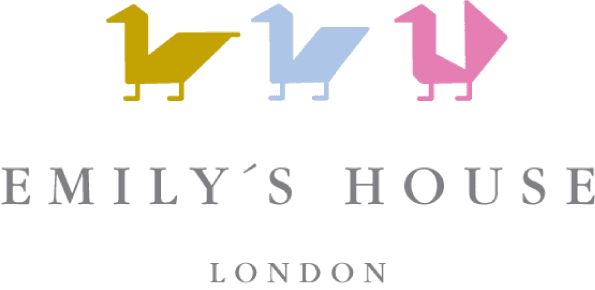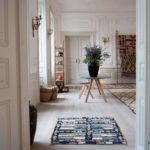Beginner’s guide to Feng Shui with Zoi Mpichtas
Zoi Mpichtas is a classical Feng Shui specialist (and a life coach), based between Cyprus and Belgium.
She has consulted for designers and architects such as Zaha Hadid and Gert Voorjans, and her belief in the ancient Chinese philosophy of ‘harmonising people with environment’ is so powerful that she even sold her last home because it didn’t fully support its principles.
We asked Zoi to give us a beginner’s guide to Feng Shui, here’s what she said….
Assembling a room
“Astrology comes first. When I’m working with a client, I start by looking at who they are from a personality point of view. I dig first in their astrology charts to find out what their personal favourable and unfavourable elements are. Then we start looking at the Feng Shui of their home or business. I often consult designers and, to achieve good results, it’s best to start early in the design stage.
After looking at the analysis then comes assembling a room. It is important to know the purpose of the room and to collect all the information about how it is to be used and by whom. I have to say though that we are talking here about classical Feng Shui, not new age.
The Bagua, used to take measurements of a building to define its orientation and the tool that Zoi uses when auditing a home. “Without the compass no assessment can take place,” she says.
Basic Feng Shui principals
“To explain the principles of Feng Shui to newcomers in a very simple way, my baseline is ‘Live life to its fullest potential.’ Feng Shui is all about energy and discovering the potential of your home. It’s a technique for discovering which rooms support you and which don’t and is about letting your home work for you. It is a way of living more than anything. When you put yourself first as an individual, ‘balancing yourself first,’ and then your home, you will notice that the rest follows very easily.
“It’s a technique for discovering which rooms support you and which don’t.”
Feng Shui colours and how to use rugs
“There are five elements in Chinese metaphysics: Wood, metal, earth, water and fire. We use the colours at home to bring what is needed for a particular room as well as to support people’s personal favoured element. Rugs (and textiles generally) belong to the wood element, however colour in a rug can add another element. For instance, in Gert Voorjans living room the blue carpet represents both wood and water elements. If you favour water, then go for black and dark blue rugs. If you favour fire, then I would suggest red, pink, purple and orange rugs.
“If you favour fire, then I would suggest red, pink, purple and orange rugs.”
When wood is your favoured element then greenish colours are appropriate – rugs in green and turquoise for instance – as well as wooden objects. Metal represents white, silver, gold, light grey and all pastel colours. Earth colours are yellow and brown.
The living room in Gert Voorjans’ home has a lot of wood energy. Carpets, cushions, chairs, the sofa and even the table incorporate fabric and textiles in general relate to wood. The blue carpet represents both wood and water elements. Similarly, the red cushion is wood, but because of its colour, carries fire energy too.
Layout and balance
“Feng Shui is for everyone. I always respect the style and taste of my clients but the approach stays the same for each project, as it is a technique. For Zaha Hadid we worked on the environment and the floor plans for a 40,000 metre square residential building. With interior designers, it’s often about looking at how we can optimise the internal layout to receive the best energy – so it’s about where to place the living space, kitchen, bedroom, study room. When the layout cannot be changed than I advise them on colours and materials to use depending on their needs.
“It’s often about looking at how to optimise the layout to receive the best energy.”
Feng Shui is all about yin and yang, finding the right balance and using the right rooms. For instance, light is very important, but so is darkness. There must be a balance between both of them. A home with a lot of light is considered to be too yang. A bedroom with too much light, for example, will influence the quality of your sleep.
Feng Shui at the front door
“If there is one room or location that we should all sort to help our lives? That would be the front door. It’s where energy enters. Make sure your front door and the entrance hall are clean, bright and inviting. Energy passing through this space collects and becomes part of it. Think about how it feels having the rubbish and recycling bins outside your door and a pile of shoes and newspapers on the inside.
“Seeing interiors in magazines or on Pinterest, I will have a first impression about the energy, but to be accurate I need to make a full analysis. When I see an ‘off’ design I want to bring balance right away! I can’t look at a home or business anymore without seeing it through “Feng Shui eyes”. There is no way back!
“Your environment does have an influence on your life. I am sure of that.”
People are cynical about Feng Shiu, which is understandable. I was like them too until I had my own experiences in my previous home. Now I am convinced that there is some kind of invisible energy that drains, energises or controls us. Your environment does have an influence on your life. I am sure of that.”
Find Zoi Mpichtas on Facebook and Pinterest.
Interiors images courtesy of Gert Voorjans




I like these idea of keeping a lantern to celebrate. It’s looks like something magical here. I like lanterns to decore home, and it’s wonderful when someone is coming home at night. It’s like my house is saying “welcome home! Thank you for amazing tips.